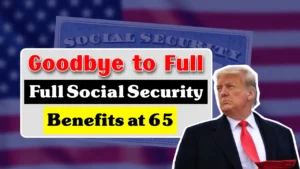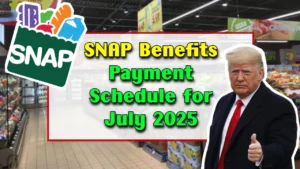In 2025 a new visa program was established, the Trump Card or Gold Card. Under the program, wealthy investors who invest at least $ 5 million in American projects are offered legal residency in the United States. It is advocated by President Trump and supported by Commerce Secretary Howard Lutnick. The proposal has attracted worldwide attention, with tens of thousands of people already registered seeking updates and a place among the first applicants.
Its supporters argue that it would bring investment, jobs, and tax revenue; its critics question its legality and fairness. The Trump Card mimics the current EB‑5 visa program, whereby foreigners can receive a green card in exchange for investing a smaller sum which is typically $800,000 to $1.05 million and creating jobs.
The new measure would jack up the investment to $5 million and permit the holders to live and work in the U.S. It has also been rumored to be the replacement for the EB‑5 program after the pandemic.
Trump Card Visa Scheme
Supporters of this program believe it can be used to bring huge amounts of money into the American economy. The plan was being promoted by commerce secretary Lutnick and Trump donor John Paulson, who claimed it could be used to pay off the nation’s $36trillion debt. With 200,000 cards issued, they believe up to $ 1 trillion could go into government coffers.
The concept is that wealthy investors, their children, and even employees would kick in both money and expertise, generating economic growth. Another policy aim is to develop a more efficient, transactional path to residency. Normal immigration pathways are typically slow and bureaucratic. The Trump Card is supposed to make it a speedier, more predictable process if applicants can pass the high-threshold investments and background checks.
Eligibility for the Trump Card Visa Scheme
- People or companies must also be able to invest $5 million into United States projects.
- A waitlist is open and applicants can register on the website for first-round consideration.
- The investment will need to satisfy U.S. agency definitions and requirements, like the creation of jobs or benefit s to the economy.
- Applicants will be subject to background checks by U.S. Government agencies Commerce, State, and Homeland Security.
- Spouses and kids can be added to the application.
- Deadlines and eligibility will be set when legislation or an executive order is finalized.
- Applicants from nations under United States travel bans or sanctions could be barred, depending on policy decisions.
Implementation of the Program
Officials at Trump Card opened a waitlist.gov in mid-June. The site suggests that individuals or groups register with the site with basic details such as their name, country, email if the application is for themselves or as an organization, etc. In days, almost 70,000 joined, a quick demonstration of deep interest.
The site already features a prototype gold card that bears Trump’s image, signature, and American images. In choosing a gold-plated aesthetic, Lutnick stressed the symbolism, telling me, Trump cares about how it looks. Specifics like tax terms, country restrictions, vetting standards, and precisely when have yet to be worked out.
Legal and Policy Discussions
Legal experts are divided on whether the Trump Card has the authority to take action without congressional approval. Usually, new laws are necessary to alter visa programs. Critics note that issuing a new golden visa by sanction might not survive in court. Internal memos are said to warn of battles with the Office of Management and Budget or the federal judiciary.
Others take issue with the fairness of essentially selling residency to the highest bidder – although, then again, residency has never come cheap. Critics compare it to selling citizenship and fear that it would exacerbate inequality and erode national values. Yet the latter can be offset somewhat by its potential to attract investment and rival other countries’ golden visa programs.
Economic and Societal Effects
The Trump Card if enacted, would result in a huge influx of U.S. cash. This could also create jobs, boost the economy, and reduce the public debt burden. Tech companies and industry leaders have expressed interest, including talks about purchasing hundreds of such cards for employee immigration.
But results will depend on whether investments are productive and create real jobs, not just leave new residences in their wake. Substituting and enlarging the EB-5 program could attract scrutiny from local businesses and politicians seeking confidence that investments are working and serving the community.
What Happens Next
The waitlist is in place, but the Trump Card is not an official category of visa just yet. Experts anticipate legislation, executive orders, regulatory guidance, and Congressional debates to follow before any cards are issued. If those steps advance, tens of thousands of visas could be available within months, with full rollout expected in late 2025 or early 2026.
In the meantime, observers suggest that potential participants continue to follow the official site, keep a watch on legal development, and consider tax planning issues. One unresolved question is whether cardholders will be taxed on income earned abroad which is a potential selling point compared to other visas.
All in all, the Trump Card is a gutsy move on immigration in America. It was intended as the gold-plated route to residency for wealthy investors, but there is still plenty of buffing to do.
FAQs
Who is eligible for a Trump Card Visa?
Those with the ability to invest $5 million in Australian projects registered on the official waitlist site will be able to apply once full rules are released.
How is this different from the EB-5 visa?
EB‑5 calls for $800,000 to $1.05 million in job creation in targeted areas. The Trump Card would increase the minimum to $5 million and are seeking a more streamlined, uniform path to residency.
Is the Trump Card legal yet?
No, it is still in the planning stage and requires more government approval. It could take Congressional or court involvement before it is really a visa.



